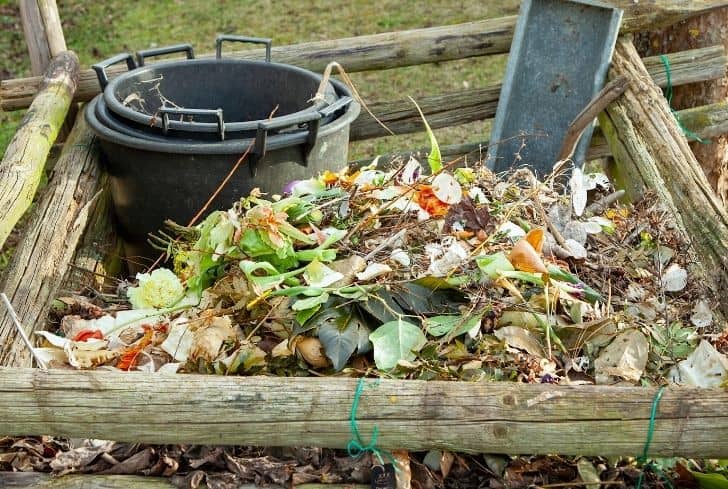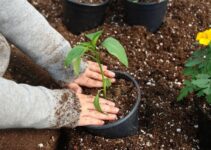Considering the sensitivity of the materials in your compost pile, you may wonder if it needs to be covered. Are you torn between putting your compost pile in the sun or the shade? Well, you aren’t alone, and the feeling is not baseless.
Naturally, compost materials need enough moisture, aeration, microorganisms, and heat. If you’re new to composting, you may have difficulty getting the right balance of these components. The confusion about how much heat is too much may also arise.
Well, this blog post will provide the answers you need. Keep reading to discover the ideal place to put your compost pile. Dive in!
Can You Compost in Sun or Shade?
Although temperature plays a significant role in composting, you will eventually get your desired compost materials whether you place the pile in the sun or shade. However, both practices also have some conditions that guide their placement.
For instance, composting in the sun exposes the content of the pile to direct rays. Reliable sources claim that this direct exposure activates bacteria and fungi and accelerates their activities.
Essentially, compost piles rely on heat for decomposition. Its role is significant, and biodegradation won’t occur without it. But again, you must take some precautionary steps, such as regulating the moisture content and rotating the pile.
On the other hand, composting in the shade is much slower because it lacks direct exposure to the sun. It is best to consider the type of tree that serves as the shade. This is because some offer a few challenges to composting.
But again, it is primarily achievable and has benefits. For instance, the leaves of a deciduous tree will fall as the temperature becomes more relaxed, leaving more room for exposure to the sun’s rays.
If you live in a region with an abundance of trees, you may not have a choice in composting under direct sunlight. So, you will have to rotate the content for the heat to circulate.
Should I Keep My Compost in a Bin?
Farmers and green thumbs have different methods of composting. However, the two most common ones are compost piles and compost bins. The differences between your options are noticeable beyond their physical structure.
A compost pile is the conventional method of composting is creating a heap of organic matter somewhere in your garden. Depending on personal preference, you may install protective structures to prevent rain, wind, and bugs from disturbing it.
Compost, or black gold, is a sustainable gardening material that’s usually in abundance. Compost piles have an advantage – because of their setup, they can be used to compost versatile materials.
However, it is a labor-intensive approach, and one of your chores includes turning the materials to ensure even access to heat. Failure to do this at least once weekly keeps the outer layers of the compost pile from participating in the decomposition process.
Placing a protective layer over a compost pile is vital to control the amount of water and heat in a heap.
To ensure all the materials in the compost pile mature around the same time, farmers compost new ones.
A compost bin may be your immediate choice for many reasons. For instance, they are easier on the eyes than compost piles.
Because they trap the smell of the materials rotting internally, farmers and gardeners may lean towards this option.
Do Compost Heaps Need the Sun to Break Down?
The materials in a compost pile contain nutrients that are highly beneficial for plants and the soil. Aside from its popularity as an environmentally friendly waste disposal method, many farmers and green thumbs consider composting an integral aspect of caring for plants.
Composting is a waste disposal method that enables farmers to turn garbage into “black gold.”
Throw in an array of organic matter, and give it a few weeks to months to produce a material that fortifies plants and the soil.
There are many processes involved in composting, most of which are internal. After putting all the materials together, you only need to leave them in a regulated environment. This includes introducing the appropriate water content, adequate oxygen, and heat. Microorganisms will appear there with time, and the decomposition process will begin.
Without a doubt, every life on earth needs the sun for survival. But does that extend to compost materials too? Just how much do they rely on the sun for decomposition?
Well, as we’ve already mentioned, four components are vital for biodegradation to occur. First, moisture softens the materials, making them pliable for the consumption of microbes. Oxygen also plays its role.
The temperature is the final component that must be regulated. When its intensity is inadequate, the biodegradation process slows down significantly. So, experts recommend composting under direct sunlight, especially in colder climes.
To answer the question, yes. Compost heaps need the sun to break down. Even if they aren’t placed in direct sunlight, a higher temperature will speed up biodegradation. In the same vein, we recommend placing your compost pile under a light shade to prevent it from catching on fire.
How Much Sun Should a Compost Pile Get?
Biodegradation is the environment’s way of disposing of organic waste. However, we’ve further modified it by accumulating the materials that can decompose and benefit our plants. Through composting, more people are supporting the movement to engage in sustainable living.
Now, an indispensable factor that facilitates decomposition in a compost pile is sunlight or a high temperature. But again, these components must be introduced in a regulated manner, meaning the heat mustn’t be too much or too little.
Exposing the compost bin to direct sunlight accelerates the maturity of our plants and hastens biodegradation.
If there is insufficient sunlight, the materials in the compost pile will take a more extended period to break down. But again, exposing it to too much heat can dry it out.
So, experts recommend moderation – expose the compost pile to just enough heat to keep it warm but not make it scorching. The challenge in composting is accelerating the process, but not everyone can pull it off without drying out the materials in the pile.
The type of compost bin you opt for counts too. Green thumbs opt for black containers because of their ability to absorb heat from the sun.
Your location is essential when determining the amount of sunlight your compost pile needs. If you live in a clime with harsh sun rays, it is best to keep the bin out of direct exposure.
Finally, it is best to avoid composting with plastic bins because intense exposure to sunlight can melt or deform them.
Look for a corner in your garden with a tolerable temperature. Although a hot corner will speed the decomposition process, you won’t appreciate the results if the heat is too intense and constant – the compost materials will inevitably dry out.
So, avoid areas with intense sunlight. You can place your compost pile in a position that doesn’t receive direct sunlight.
What Will Make a Compost Pile Break Down Fast?
Because of the importance of decayed organic matter to the soil and plants, those who love gardening have actively invested in compost piles. It is a seamless method to accumulate the nutrients your plants need while disposing of your household kitchen waste.
Your materials may require weeks or even a year for utter decomposition, depending on what you’re composting. Either way, you have access to enough to last a while.
It is an excellent idea to mix compost with topsoil because it helps with water retention. It facilitates adequate moisture drainage in heavy soil and water retention in sandy soil.
With a small surface area, ample microbes, moisture, aeration, and heat, the materials in your compost will break down faster.
However, knowledge about some hacks that speed up decomposition is largely limited. Thankfully, we have a few for you:
- Shred debris as much as possible. The smaller the size, the easier it becomes for microbes to break it down. A rule of thumb is to ensure kitchen scraps never exceed an inch in length.
- There must be a carbon and nitrogen content balance for faster decomposition. These two substances are co-dependent organisms that feed off each other. However, they create the ideal decomposition environment in the process— they beacon to bugs and other microorganisms required for biodegradation. The proper ratio for this feat is 30 to 1.
- Using a compost tumbler or a three-bin system will also help you speed up the rate of biodegradation. These techniques allow frequent turning of the compost materials, maintaining the warmth and moisture content required for decomposition.
Do Compost Piles Need to be Covered?
The apparent sensitivity of compost materials may lead you to wonder if your compost pile needs a cover. However, it doesn’t need one in most cases because this may keep oxygen from penetrating, and insufficient aeration interferes with the decomposition rate.
It can also trap too much moisture. Frankly, the downsides of covering your compost pile are many, including impeding the decomposition speed.
An ample supply of oxygen and moisture are vital for the materials in a compost pile to break down. Sealing the pile or bin can create an anaerobic environment that inevitably kills beneficial microbes.
Since moisture is trapped internally, it breeds mold. Then, the materials in the compost pile will start spoiling, and not in a manner that excites farmers.
The stench from the area then grows potent that even your neighbors may smell it. Since there’s no oxygen, the heat will reduce in the compost pile, consequently impeding the biodegradation process.
If the materials are also too dry, rain can introduce the required moisture content. However, this will be impossible if you seal up your compost bin.
But again, there are also a few advantages of covering a compost pile. For one, you can use this technique to protect the materials from too much rain. If the moisture content is too high, it’ll damage the compost materials.
You can also cover your compost pile if you live in a region with an influx of rodents. Covering the compost bin will prevent them from accessing the content, which means you are at liberty to compost any item you want. Even if the smell attracts vermin, they have no manner of entry.
In the winter, the heat is likely to escape from the compost bin if you don’t cover it. And finally, cover your compost pile if you’ll be directly exposing it to the sun. otherwise, you put the items inside it at the risk of drying out.
Conclusion
Composting as a newbie is an exciting experience that certainly leaves you with many unanswered questions. You will make discoveries in the process, as you’ve done today.






